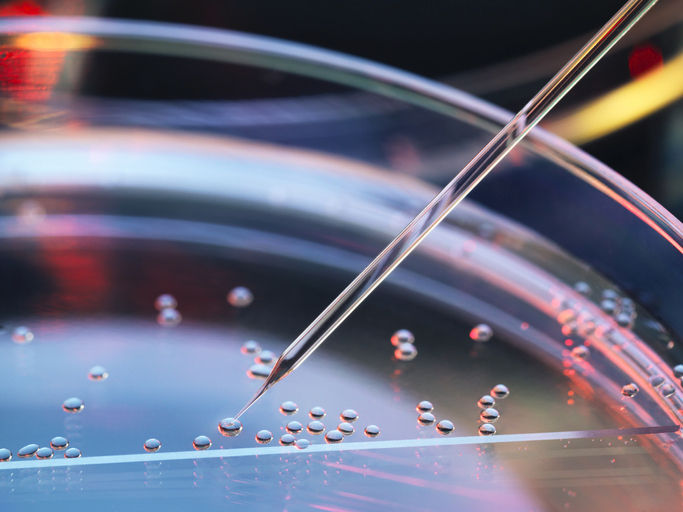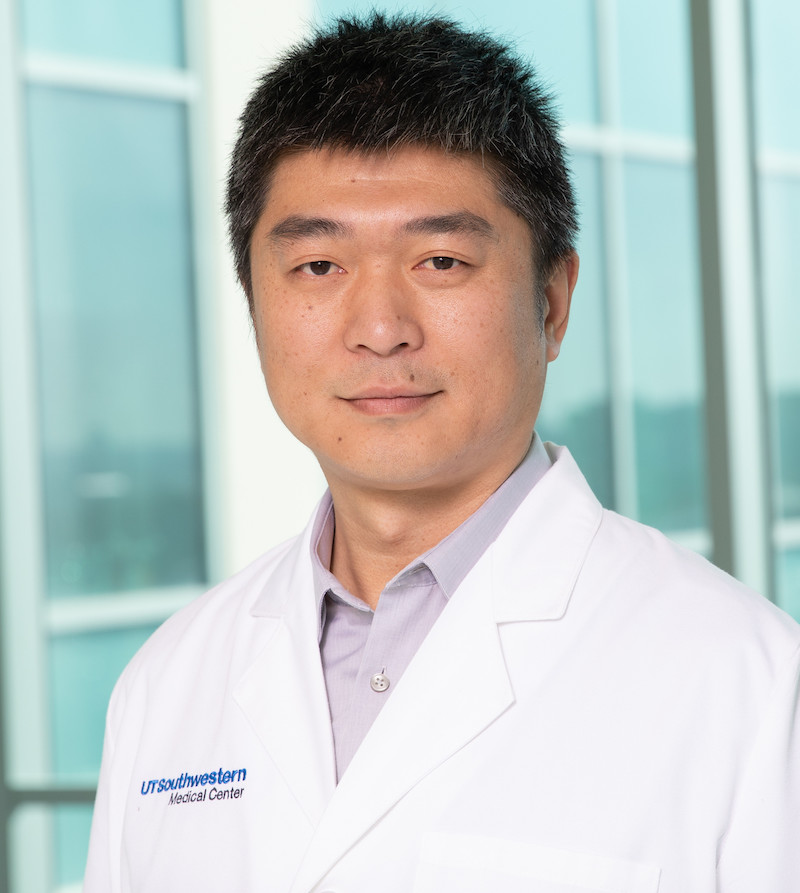Development of new stem cell type may lead to advances in regenerative medicine

DALLAS – Dec. 3, 2020 – A team led by UT Southwestern has derived a new “intermediate” embryonic stem cell type from multiple species that can contribute to chimeras and create precursors to sperm and eggs in a culture dish.
The findings, published online this week in Cell Stem Cell, could lead to a host of advances in basic biology, regenerative medicine, and reproductive technology.

Cells in early embryos have a range of distinct pluripotency programs, all of which endow the cells to create various tissue types in the body, explains study leader Jun Wu, Ph.D., assistant professor of molecular biology. A wealth of previous research has focused on developing and characterizing “naïve” embryonic stem cells (those about four days post-fertilization in mice) and “primed” epiblast stem cells (about seven days post-fertilization in mice, shortly after the embryo implants into the uterus).
However, says Wu, there’s been little progress in deriving and characterizing pluripotent stem cells (PSCs) that exist between these two stages – largely because researchers have not been able to develop a paradigm for maintaining cells in this intermediate state. Cells in this state have been thought to possess unique properties: the ability to contribute to intraspecies chimeras (organisms that contain a mix of cells from different individuals of the same species) or interspecies chimeras (organisms that contain a mix of cells from different species) and the ability to differentiate into primordial germ cells in culture, the precursors to sperm and eggs.

Photo illustration by Leqian Yu
For this study, the researchers successfully created intermediate PSCs, which they named “XPSCs” from mice, horses, and humans.
Wu says that these results could eventually lead to an array of advances in both basic and applied research. For example, looking at gene activity in XPSCs from different species and interspecies chimeras could help researchers understand which signatures have been conserved through evolution. Examining the communication between cells in chimeras may help scientists identify strategies that could be used to accelerate the development of tissues and organs from stem cells used for transplantation. And using chimera-derived primordial germ cells to create sperm and eggs could aid in preserving endangered animal species and advancing infertility treatments.
“These XPSCs have enormous potential. Our study helps open the door to each of these possibilities,” says Wu, who is a Virginia Murchison Linthicum Scholar in Medical Research.
Wu notes that developing XPSCs presented a special challenge because the conditions that keep naïve PSCs in a stable state are exactly the opposite from those that stabilize primed PSCs. While culture conditions for naïve PSCs must activate a WNT cell-signaling pathway and suppress the FGF and TGF-ß pathways, the conditions to maintain primed PSCs must suppress WNT and activate FGF and TGF-ß.
Aiming for the preferred environment for XPSC derivation, Wu and his colleagues placed cells from early mouse embryos into cultures containing chemicals and growth factors that activate all three pathways. These lab-grown cells were extremely stable in culture and able to multiply without developing any further for approximately two years.
Additional experiments showed that these cells met the expectations researchers have long strived to meet of contributing to chimeras and directly differentiating into primordial germ cells. Wu and his colleagues made intraspecies chimeras of mice using cells derived from mice with different coat colors by injecting the cells into early mouse embryos. They also tracked the contributions of the XPSCs by tagging the cells with a fluorescent protein and then identifying them throughout the resulting offspring’s body.
Wu’s team made interspecies chimeras by injecting horse XPSCs into early mouse embryos and allowing the embryos to develop in mice for several days. Surprisingly, although horses have a comparatively long gestational period – nearly a year – the researchers found that these foreign cells had contributed to mouse organ development, indicating that signals from the mouse cells determine organ developmental timelines.
Like XPSCs from other species, the human cells showed that they were capable of differentiating into a variety of tissues if culture conditions allowed them to progress in development, as well as directly form primordial germ cells in a dish.
Other UTSW researchers who contributed to this study include Leqian Yu, Yulei Wei, Carlos A. Pinzon Arteaga, Masahiro Sakurai, Daniel A. Schmitz, Canbin Zheng, and Emily D. Ballard. Yu and Wu are inventors on a patent application arising from this work.
This study was funded by the Cancer Prevention and Research Institute of Texas (CPRIT No. RR170076), the Hamon Center for Regenerative Science and Medicine, the Guangdong Provincial Key Laboratory of Genome Read and Write (No. 2017B030301011), and the Asahi Glass Foundation.
About UT Southwestern Medical Center
UT Southwestern, one of the premier academic medical centers in the nation, integrates pioneering biomedical research with exceptional clinical care and education. The institution’s faculty has received six Nobel Prizes, and includes 23 members of the National Academy of Sciences, 17 members of the National Academy of Medicine, and 13 Howard Hughes Medical Institute Investigators. The full-time faculty of more than 2,500 is responsible for groundbreaking medical advances and is committed to translating science-driven research quickly to new clinical treatments. UT Southwestern physicians provide care in about 80 specialties to more than 105,000 hospitalized patients, nearly 370,000 emergency room cases, and oversee approximately 3 million outpatient visits a year.
